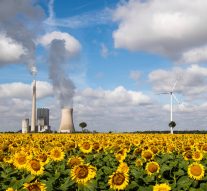
The leading role of Europe on climate change after Fit for 55 Package
Energy 6 September 2021Estimated reading time: ~ 3 minutes
Reducing CO2 emissions is the main objective of the EU climate policy. To this end, the European Commission recently presented the ambitious “Fit for 55” Package, a set of measures that aim to place the EU on the road towards a 55% Green House Gas Emissions (GHGE) reduction by 2030, the first step to reach carbon neutrality by 2050.
The Commission Package’s is wide-ranging, made up of 16 initiatives: two Communications, four Directives, eight Regulations and two Decisions. The Communications are on emission target reductions for the next decades and on alternative fuel infrastructures. The Directives concern the ETS, energy product and electricity taxation, renewable energies, as well as energy efficiency. The Regulations touch on Effort Sharing (the annual emission reduction of Member States), the carbon border adjustment mechanism (Cbam), the creation of a Social Climate Fund for land, land use change and forestry (Lulucf), emission performance standards for cars and vans, alternative fuel infrastructures with the DAFI review, air transport (ReFuelEu Aviation), and the use of renewable and low-carbon fuels in maritime transport (FuelEu Maritime). Finally, the Decisions presented a notification system for emission compensation for air transport and the ETS market stability reserve until 2030.
Therefore, while the IEA warns that CO2 emissions are continuing to increase and will reach record levels in 2023, the European Union intends to review the full range of tools available for its climate policies, raising their ambitions. The measures are numerous. With regard to the ETS reform, the proposal is to increase emission cuts by 2030 from 43% to 61% compared to 2005 (thus raising the annual reduction rate from 2.2% to 4.2%). Maritime transport is also included in the ETS and for road transport and the residential sector the proposal establishes a separate ETS based on fuels starting from 2025. Air transport, on the other hand, will gradually see its free emission allowances reduced.
More precisely, as the CBAM, the mechanism aimed at combating emission leakage and whereby EU importers will be required to purchase certificates corresponding to the cost of CO2 that would fall on products manufactured in the EU, has introduced that free allocations will be reduced by 10% per year. The price of the certificate will be equal to the average price of CO2 defined by the previous ETS auctions. Starting in 2023, CBAM will weigh on imports of cement, electricity, fertilizers, steel, iron and aluminum.
As for the sectors not covered by the ETS, the emission reductions in 2030 will rise to 40% from 29%. Effort sharing provides that Italy will have to increase its efforts from 33% to 43%. Furthermore, a significant use by EU Member States of the carbon sink is expected. Member States will have to achieve climate neutrality in agriculture, land use and forestry by 2035. Where the production of renewable energy is concerned, the target has been increased to 40% by 2030, while, in the field of energy efficiency, a reduction of 39% in primary consumption and 36% in final consumption is envisaged, with an annual reduction rate for EU countries which has almost doubled.
The objectives related to the mobility sector, which provide for the reduction to 0 of car and van emissions by 2035, have raised heated objections. At the same time, a much wider development of recharging / refueling networks is envisaged. In fact, an additional 1kW of recharging capacity is required for each electric car registered, and for motorways a 600 kW facility is required for every 60 km. For hydrogen refueling, a refueling facility is planned for every 150 km.
The structure of energy taxation (Energy Taxation Directive) has also been reviewed, placing parameters on the actual energy content and environmental performance. In particular, the highest minimum level is set for petrol and diesel. On the other hand, the lower level applies to electricity, green hydrogen, advanced biofuels and biogas. An intermediate level will be applied to methane and LPG.
From 2024, the Social Climate Fund will be operational, financed with 144 billion euros until 2032, partly obtained from the proceeds of the ETS for road transport and buildings. It is aimed at containing the economic impact on consumers deriving from the new emission reduction measures. For this reason, to access it each country will have to submit to the Commission a plan including measures in favor of companies exposed to the ETS reform and citizens at risk of energy poverty. The allocation of funds for innovation will also be increased.
The measures put forward by the Commission have immediately provoked an intense public debate. On the one hand, there are numerous doubts about the impact of the measures on consumers and businesses, the effects on the competitiveness of European industry, the ability to rapidly unlock the necessary investments to enable the path towards decarbonization, just to mention a few. On the other hand, others believe that the objectives set are still inadequate to reach the objective of climate neutrality. It is evident that the contents of the “Fit for 55” Package, which, as we recall, are proposed by the Commission, will be the subject of tense negotiations among Member States. The Eastern European countries, in particular, will probably express their resistance and as such it will be necessary to find a compromise. The Commission’s proposals, therefore, will have to undergo the scrutiny of the Council and Parliament and it is reasonable to expect that several years will pass before reaching a final green light on the whole Package. Certainly, what will be ultimately agreed upon will significantly shape the Europe of the next decades.
Written by: Federico Lioy
Submitted on: September 6, 2021



